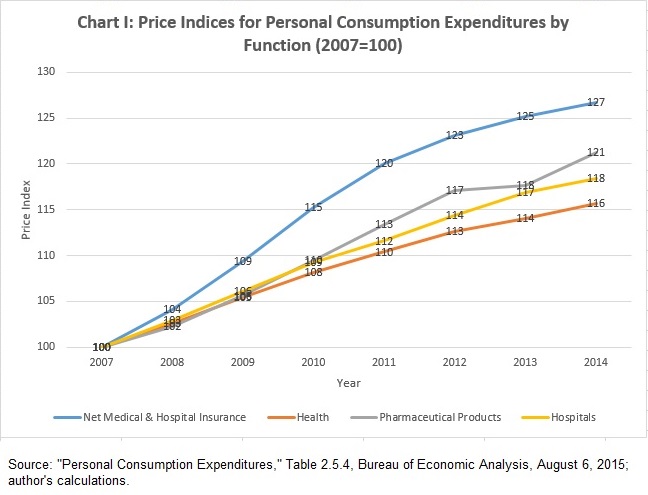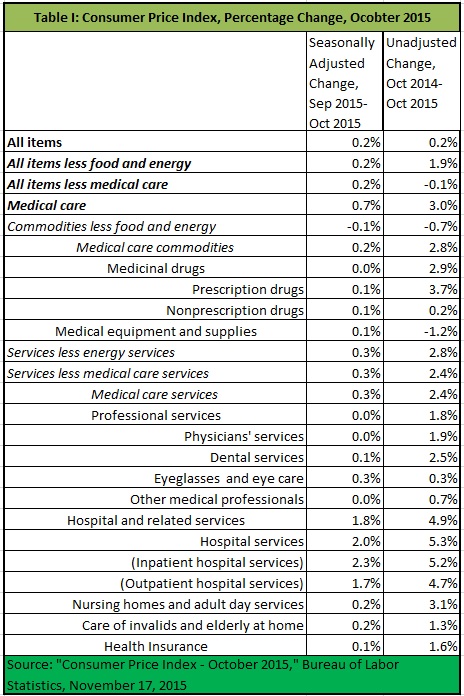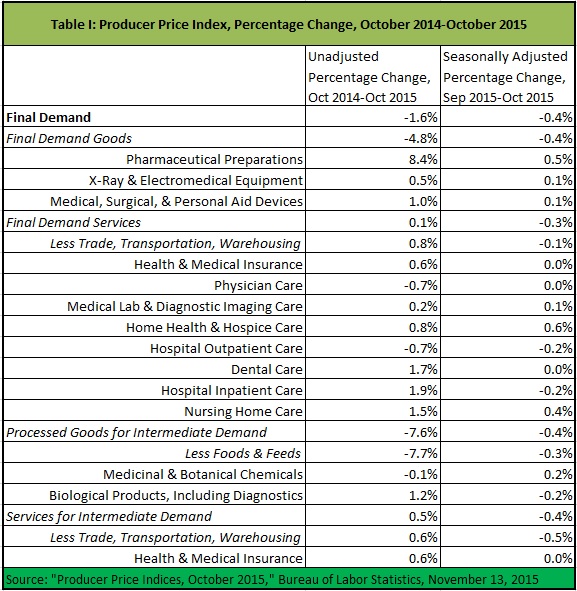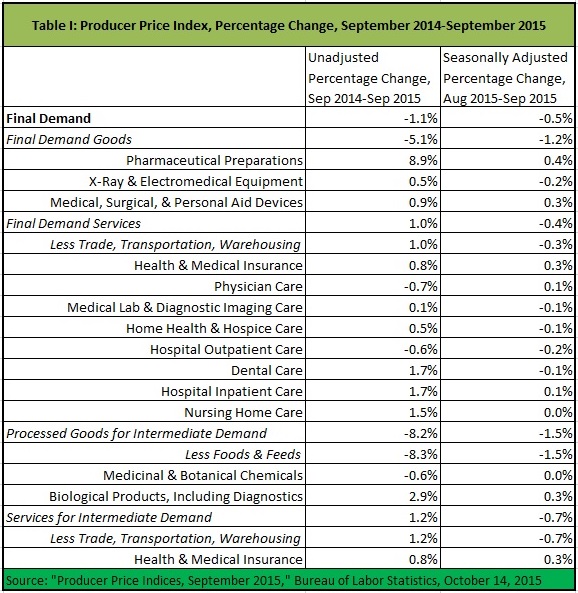Is Health Inflation Really Quite Tame?
 I sometimes feel the odd man out when addressing inflation in U.S. health care. I discuss the monthly Consumer Price Index and Producer Price Index releases, as well as other monthly and quarterly economic releases that include health spending. I have suggested health inflation is stirring, which is counter to respected scholars like Chris Conover of Duke University and those at the Altarum Institute, the “go to” source for analysis of health inflation.
I sometimes feel the odd man out when addressing inflation in U.S. health care. I discuss the monthly Consumer Price Index and Producer Price Index releases, as well as other monthly and quarterly economic releases that include health spending. I have suggested health inflation is stirring, which is counter to respected scholars like Chris Conover of Duke University and those at the Altarum Institute, the “go to” source for analysis of health inflation.
However, I seem to be siding with ordinary Americans, who are struggling as much as they ever did to pay medical bills. I expect people still struggle because, although inflation in health goods and services is low by historical standards, it is high relative to general inflation faced by consumers.






